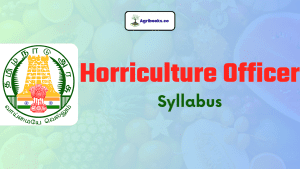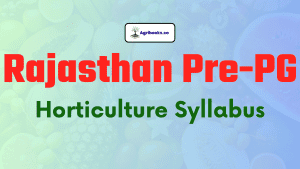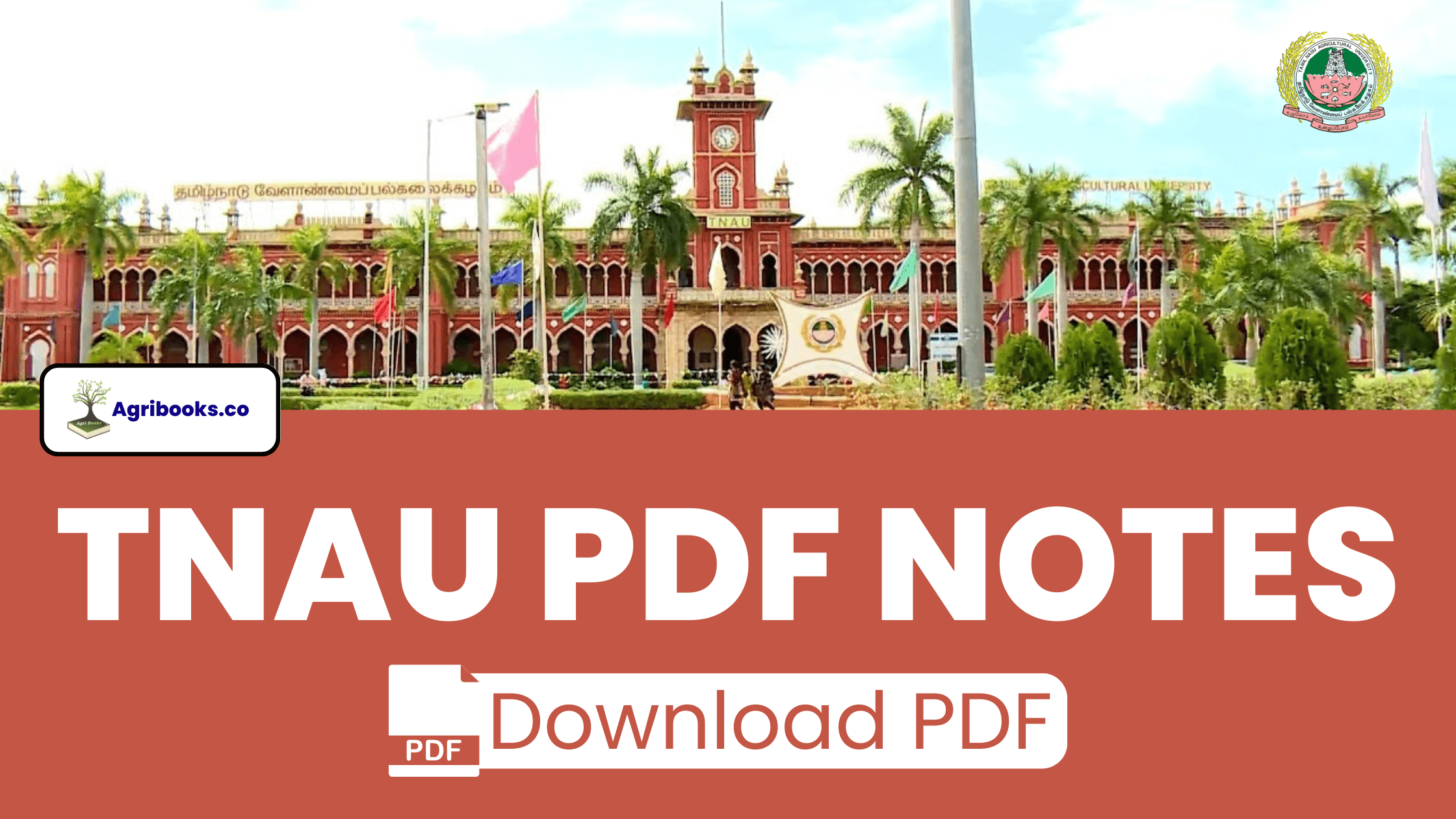MP SHDO वरिष्ठ उद्यान विकास अधिकारी Syllabus 2023
MP SHDO Syllabus 2023
Download the syllabus pdf for the MP ESB SHDO Recruitment 2023 exam.

- General Knowledge
- General Hindi
- General English
- General Mathematics
- General Science
- General Aptitude
There will be a total of 100 questions in Part A of the MP SHDO exam. In this, questions will be asked under the above subjects.

1. Tropical and Dry Land Fruit Production
Commercial varieties of regional, national and international importance, eco-physiological requirements, recent trends in propagation, rootstock influence, planting systems, cropping systems, root zone and canopy management, nutrient management, water management, fertigation, the role of bioregulators, abiotic factors limiting fruit production, physiology of flowering, pollination fruit set and development, honeybees in cross-pollination, physiological disorders- causes and remedies, quality improvement by management practices; maturity indices, harvesting, grading, packing, storage and ripening techniques; industrial and export potential, Agri. Export Zones(AEZ) and industrial supports for crops viz. mango, banana, citrus, papaya, guava, sapota, jackfruit, aonla, pomegranate, phalsa, ber, pineapple, annonas, avocado, apple, pear, grape, litchi, grape and strawberry.
2. Biodiversity and Conservation of Fruit Crops
Biodiversity and conservation; issues and goals, centres of origin of cultivated fruits; primary and secondary centres of genetic diversity. Present status of gene centres; exploration and collection of germplasm; conservation of genetic resources – conservation in situ and ex-situ. Germplasm conservation- the problem of recalcitrancy-cold storage of scions, tissue culture, cryopreservation, pollen and seed storage; inventory of germplasm, the introduction of germplasm, plant quarantine. Intellectual property rights. GIS and documentation of local biodiversity, Geographical indication.
Crops
Mango, sapota, citrus, guava, banana, papaya, grapes, jackfruit, custard, apple, ber, aonla, malus, Prunus sp, litchi, nuts, coffee, tea, rubber, cashew, coconut, cocoa, palmyrah, areca nut, oil palm and betel vine.
3. Canopy management
Canopy management – importance and advantages; factors affecting canopy development.
Canopy types and structures with special emphasis on the geometry of planting, and canopy manipulation for optimum utilization of light. Light interception and distribution in different types of tree canopies.
Canopy development and management in relation to growth, flowering, fruiting and fruit quality in temperate fruits, grapes, passion fruits, mango, sapota, guava, citrus and ber.
4. Propagation and Nursery Management for Fruit Crops
Introduction, life cycles in plants, the cellular basis for propagation, sexual propagation, apomíxis, polyembryony, chimaeras. Principles factors influencing seed germination of horticultural crops, dormancy, hormonal regulation of germination and seedling growth. Seed quality, treatment, packing, storage, certification, testing. Asexual propagation-rooting of soft and hardwood cutting under mist by growth regulators. Rooting of cuttings in hotbeds. Physiological, anatomical and biochemical aspects of root induction in cuttings. Layering – principle and methods. Budding and grafting – selection of elite mother plants, and methods. Establishment of bud wood bank, stock, scion and inter stock, relationship – Incompatibility. Rejuvenation through top working – Progeny Orchard and scion bank. Micro-propagation – principles and concepts, commercial exploitation in horticultural crops. Techniques in vitro clonal propagation, direct organogenesis, embryogenesis, micrografting, meristem culture. Hardening, packing and transport of micro-propagules. Nursery – types, structures, components, planning and layout. Nursery management practices for healthy propagule production.
5. Breeding of Fruit Crops
Origin and distribution, taxonomical status species and cultivars, cytogenetics, genetic resources, blossom biology, breeding systems, breeding objectives, ideotypes, approaches for crop improvement – introduction, selection, hybridization, mutation breeding, polyploidy breeding, rootstock breeding, improvement of quality traits, resistance breeding for biotic and abiotic stresses, biotechnological interventions, achievements and future thrust in the following selected fruit crops.
Crops
Mango, banana and pineapple Citrus, grapes, guava and sapota Jackfruit, papaya, custard apple, aonla, avocado and ber litchi, jamun, phalsa, Apple, pear and strawberry.
6. Growth and Development of Horticultural Crops
Annual, semi-perennial and perennial horticultural crops, environmental impact on growth and development, the effect of light, photosynthesis and photoperiodism vernalisation, effect of temperature, heat units, thermoperiodism. Assimilate partitioning during growth and development, influence of water and mineral nutrition during growth and development, biosynthesis of auxins, gibberellins, cytokinins, abscisic acid, ethylene, brassinosteroids, growth inhibitors, morphactins, the role of plant growth promoters and inhibitors. Developmental physiology and biochemistry during dormancy, bud break, juvenility, vegetative to reproductive interphase, flowering, pollination, fertilization and fruit set, fruit drop, fruit growth, ripening and seed development. Growth and developmental process during stress – manipulation of growth and development, the impact of pruning and training, chemical manipulations in horticultural crops, molecular and genetic approaches in plant growth development.
7. Production technology of Vegetable Crops
Introduction, botany and taxonomy, climatic and soil requirements, commercial varieties/hybrids, sowing/planting times and methods, seed rate and seed treatment, nutritional and irrigation requirements, intercultural operations, weed control, mulching, physiological disorders, harvesting, post-harvest management, plant protection measures and seed production of tomato, brinjal, hot and sweet peppers, okra, peas and broad bean, green leafy cool season vegetables.
Potato, cole crops, carrot, radish, turnip and beetroot, Bulb crops: onion and garlic, Peas and broad bean, green leafy cool season vegetables, cucurbitaceous, tapioca, sweet potato and colocasia.
8. Breeding of Vegetable Crops
Origin, botany, taxonomy, cytogenetics, genetics, breeding objectives, breeding methods (introduction, selection, hybridization, mutation), varieties and varietal characterization, resistance breeding for biotic and abiotic stress, quality improvement, molecular marker, genomics, marker-assisted breeding and QTLs, biotechnology and their use in breeding in vegetable crops-Issue of patenting, PPVFR act.
Crops: Potato, tomato, brinjal, hot pepper, sweet pepper, okra, Peas and beans, amaranth, chenopods and lettuce, Gourds, melons, pumpkins and squashes Cabbage, cauliflower, carrot, beetroot, radish, sweet potato and tapioca
9. Growth and Development of Vegetable Crops
Physiology of dormancy and germination of vegetable seeds, tubers and bulbs; Role of auxins, gibberellins, cytokinins and abscisic acid; Application of synthetic hormones, plant growth retardants and inhibitors for various purposes in vegetable crops; Role and mode of action of morph actins, antitranspirants, anti-auxin, ripening retardant and plant stimulants in vegetable crop production. Role of light, temperature and photoperiod on growth, development of underground parts, flowering and sex expression in vegetable crops; apical dominance. Physiology of fruit set, fruit development, fruit growth, flower and fruit drop; parthenocarpy in vegetable crops; phototropism, ethylene inhibitors, senescence and abscission; fruit ripening and physiological changes associated with ripening. Plant growth regulators in relation to vegetable production; morphogenesis and tissue culture techniques in vegetable crops. Definition of seed and its quality, new seed policies; DUS test, scope of vegetable seed industry in India.
10. Seed Production Technology of Vegetable Crops
Genetical and agronomical principles of seed production; methods of seed production; use of growth regulators and chemicals in vegetable seed production; floral biology, pollination, breeding behaviour, seed development and maturation; methods of hybrid seed production. Categories of seed; maintenance of nucleus, foundation and, certified seed; seed certification, seed standards; seed act and law enforcement, plant quarantine and quality control. Physiological maturity, seed harvesting,. extraction, curing, drying, grading, seed processing, seed coating and pelleting, packaging (containers/packets), storage and cryopreservation of seeds, and synthetic seed technology. Agro-techniques for seed production in solanaceous vegetables, cucurbits, leguminous vegetables, cole crops, bulb crops, leafy vegetables, okra, and vegetatively propagated vegetables.
11. Organic Vegetable Production Technology
Importance, principles, perspective, concept and component of organic production of vegetable crops. Methods for enhancing soil fertility, mulching, and raising green manure crops. Indigenous methods of compost, Panchagavya, Biodynamics, preparation etc Pest and disease management in organic farming; ITK’s in organic farming. Role of botanicals and bio-control agents. GAP and GMP- Certification of organic products; organic production and export -opportunity and challenges.
12. Production of Plantation, spices, medicinal and aromatic Crops
Role of crops in the national economy, export potential, IPR issues. Systems of cultivation, multitier cropping, photosynthetic efficiencies of crops at different tiers, rainfall, humidity, temperature, light and soil pH on crop growth and productivity, high-density planting, nutritional requirements, physiological disorders, the role of growth regulators and macro and micronutrients, water requirements, fertigation, moisture conservation, shade. regulation, weed management, training and pruning, crop regulation, maturity indices, and harvesting. Cost-benefit analysis, organic farming, management of drought, precision, farming.
Crops: Coffee, tea, cashew, betel vine, cocoa, rubber, palmyrah palm
13. Production Technology of Spice Crops
Introduction, the importance of spice crops-historical accent, present status national and international, future prospects, botany and taxonomy, climatic and soil requirements, commercial varieties/hybrids, site selection, layout, sowing/planting times and methods, seed rate and seed treatment, nutritional and irrigation requirements, intercropping, mixed cropping, intercultural operations, weed control, mulching, physiological disorders, harvesting, post-harvest management, plant protection measures and seed planting material and micro-propagation, precision farming, organic resource management, organic certification, quality control, pharmaceutical significance and protected cultivation of: turmeric, ginger garlic, black pepper, Cardamom, clove, coriander, fenugreek, cumin, fennel, ajwain, dill, celery, cinnamon, nutmeg, allspice.
14. Production Technology of Medicinal and Aromatic Crops
Production technology for Senna, Periwinkle, Coleus, Aswagandha, Glory lily, Sarpagandha, Dioscorea sp., Aloe vera, Phyllanthus amarus, Andrographis paniculata, Medicinal solanum, Isabgol, Poppy, Safed musli, Stevia rebaudiana, Mucuna pruriens, Ocimum sp.
Production technology for palmarosa, lemongrass, citronella, vettiver, geranium, artemisia, mentha, ocimum, eucalyptus, rosemary, thyme, patchouli, lavender, marjoram, oreganum.
Influence of biotic and abiotic factors on the production of secondary metabolites, Regulations for herbal raw materials, Phytochemical extraction techniques.
Institutional support and international promotion of essential oil and perfumery products.
15. Breeding of Plantation Crops and Spices
Species and cultivars, cytogenetics, survey, collection, conservation and evaluation, blossom biology, breeding objectives, approaches for crop improvement, introduction, selection, hybridization, mutation breeding, polyploid breeding, improvement of quality traits, resistance breeding for biotic and abiotic stresses, molecular aided breeding and biotechnological approaches, marker-assisted selection, bioinformatics, IPR issues, achievements and future thrusts, Coffee, tea, cashew, betel vine, cocoa, rubber, palmyrah palm, Black pepper, cardamom, Ginger, turmeric, Fenugreek, coriander, fennel, celery, ajwain, Nutmeg, cinnamon, clove and allspice.
16. Breeding of Medicinal and Aromatic Crops
Plant biodiversity, conservation of germplasm, IPR issues, Major objectives of breeding of Medicinal and Aromatic Crops, Scope for introduction; cytogenetic background of important Medicinal and Aromatic Crops; Scope for improvement of Medicinal and Aromatic Crops through selection, intra and interspecific hybridization, induced autotetraploidy, mutation breeding and biotechnological approaches.
Breeding for yield and quality improvement in medicinal plants, Breeding for high herbage yield, essential oil and quality components, secondary metabolites in medicinal and aromatic crops; Genetics of active principles and assay techniques useful in the evaluation of breeder’s material. Breeding problems in seed and vegetatively propagated medicinal and aromatic crops.
Achievements and prospects in the breeding of medicinal crops, viz. Cassia angustifolia, Catharanthus roseus, Gloriosa superba, Coleus forskohlii, Stevia, Withania somnifera, Papaver somniferum, Plantago ovata, Dioscorea sp.
Prospects in the breeding of medicinal crops, viz. Chlorophytum sp, Fauvolfia serpentina, Aloe vera, Ocimum sp, Phyllanthus amarus, Solanum sp.
Prospects in the breeding of aromatic crops viz., Geranium, vetiver, Lemon grass, Palmarosa, citronella, Rosemary, Patchouli, Eucalyptus, Artemisia and Mint.
17. Processing of Plantation Crops, Spices Medicinal and Aromatic Crops
Commercial uses of spices and plantation crops. Processing of major spices – cardamom, black pepper, ginger, turmeric, chilli and paprika, vanilla, cinnamon, clove, nutmeg, allspice, coriander, fenugreek, curry leaf. Extraction of oleoresin and essential oils.
Processing of produce from plantation crops, viz. coconut, areca nut, cashew nut, oil palm, palmyrah, date palm, cocoa, tea, coffee, rubber etc.
Processing of medicinal plants- Dioscorea, gloriosa, stevia, coleus, ashwagandha, tulsi, isabgol, safed musli, senna, aloe, Catharanthus, etc. Different methods of drying and storage. Microbial contamination of the stored product. Influence of temperature and time combination on active principles.
Extraction and analysis of active principles using TLC/HPLC/GC. Distillation, solvent extraction from aromatic plants- davana, mint, rosemary, rose, citronella, lavender, jasmine, etc, Study of aroma compounds and value addition. Nano-processing technology in medicinal and aromatic plants.
18. Organic Spice and Plantation Crop Production Technology
Organic production of spice crops and plantation crops, viz. pepper, cardamom, turmeric, ginger, cumin, vanilla, coconut, coffee, cocoa, tea, and areca nut.
GAP and GMP- Certification of organic products; organic production and export – opportunity and challenges.
19. Breeding of Flower Crops and Ornamental Plants
Principles Evolution of varieties, origin, distribution, genetic resources, genetic divergence- Patents and Plant Variety Protection in India. Genetic inheritance — of flower colour, doubleness, flower size, fragrance, post-harvest life. Breeding methods suitable for sexually and asexually propagated flower crops and ornamental plants– introduction, selection, domestication, polyploid and mutation breeding for varietal development, Role of heterosis, Production of hybrids, Male sterility, incompatibility problems, seed production of flower crops. Breeding constraints and achievements made in commercial flowers rose, jasmine, chrysanthemum, marigold, tuberose, crossandra, carnation, dahlia, gerbera, gladioli, orchids, anthurium, aster, heliconia, liliums, nerium.
20. Production Technology of Flowers
Scope of cut flowers in global trade, Global Scenario of cut flower production, Varietal wealth and diversity, the area under cut flowers and production problems in India- Patent rights, nursery management, media for nursery, special nursery practices. Growing environment, open cultivation, protected cultivation, soil requirements, artificial growing media, soil decontamination techniques, planting methods, the influence of environmental parameters, light, temperature, moisture, humidity and CO2 on growth and flowering. Cut flower standards and grades, harvest indices, harvesting techniques, post-harvest handling, Methods of delaying flower opening, Pre-cooling, pulsing, packing, Storage & transportation, marketing, export potential, institutional support, Agri Export Zones. Flower production water and nutrient management, fertigation, weed management, rationing, training and pruning, disbudding, special horticultural practices, use of growth regulators, physiological disorders and remedies, IPM and IDM, production for exhibition purposes.
Cut rose, cut chrysanthemum, carnation, gerbera, gladioli, tuberose, orchids, anthurium, aster, liliums, bird of paradise, heliconia, alstroemeria, alpinia, ornamental ginger, bromeliads, dahlia, gypsophila, limonium, statice, stock, cut foliages and fillers.
Flower forcing and year-round flowering through physiological interventions, chemical regulation, and environmental manipulation.
Cut flowers
Cut rose, cut chrysanthemum, carnation, gerbera, gladioli, tuberose, orchids, anthurium, aster, liliums, bird of paradise, heliconia, alstroemeria, alpinia, ornamental ginger, bromeliads, dahlia, gypsophila, limonium, statice, stock, cut foliages and fillers.
Loose flowers
Jasmine, scented rose, chrysanthemum, marigold, tuberose, crossandra, nerium, hibiscus, barleria, celosia, gomphrena, non-traditional flowers (Nyctanthes, Tabernaemontana, Ixora, lotus, lilies, tecoma, champak, pandanus).
21. Land Scaping and Ornamental Gardening
Landscape designs, types of gardens, English, Mughal, Japanese, Persian, Spanish, Italian, Vanams, and Buddha gardens; Styles of the garden, formal, informal and freestyle gardens. Urban landscaping, Landscaping for specific situations, institutions, industries, residents, hospitals, roadsides, traffic islands, damsites, IT parks, and corporates. Garden plant components Lawns, Establishment and maintenance, special types of gardens, vertical garden, roof gardens, bog gardens, sunken gardens, rock gardens, clock gardens, colour wheels, temple gardens, and sacred groves.
Bio-aesthetic planning, eco-tourism, theme parks, indoor gardening, therapeutic gardening, non-plant components, water scaping, xeriscaping, hardscaping.
22. Protected Floriculture
Prospects of protected floriculture in India; Types of protected structures – Greenhouses, polyhouses, shade houses, rain shelters etc., Designing and erection of protected structures; Low cost/Medium cost/High-cost structures – economics of cultivation; Location-specific
Designs; Structural components; Suitable flower crops for protected cultivation. Environment control- management and manipulation of temperature, light, humidity, air and CO2; Heating and cooling systems, ventilation, naturally ventilated greenhouses, fan and pad cooled greenhouses, light regulation. Containers and substrates, soil decontamination, layout of drip and fertigation system, water and nutrient management, weed management, physiological disorders, IPM and IDM. Crop regulation by chemical methods and special horticultural practices (pinching, disbudding, deshooting, deblossoming, etc.); Staking and netting, Photoperiod regulation. Harvest indices, harvesting techniques, post-harvest handling techniques, Precooling, sorting, grading, packing, storage, and quality standards.
23. Value Addition in Flowers
Types of value-added products, value addition in loose flowers, garlands, veni, floats, floral decorations, value addition in cut flowers, flower arrangement, styles, Ikebana, morebana, freestyle, bouquets, button-holes, flower baskets, corsages, floral wreaths, garlands, etc.; Selection of containers and accessories for floral products and decorations. Dry flower making-Drying, bleaching, dyeing, embedding, pressing.
24. Turfing and Turf Management
Turf grasses Types, species, varieties, hybrids; Selection of grasses for different locations; Grouping according to climatic requirement-Adaptation; Turfing for roof gardens. Preparatory operations; Growing media used for turf grasses Turf establishment methods, seeding, sprigging/dibbling, plugging, sodding/turfing, turf plastering, hydro-seeding, astroturfing. Turf management – Irrigation, nutrition, special practices, aerating, rolling, soil top dressing, use of turf growth regulators (TGRS) and micronutrients, Turf mowing equipment, techniques to minimize wear and compaction, weed control, biotic and abiotic stress management in turfs.











Comments (0)